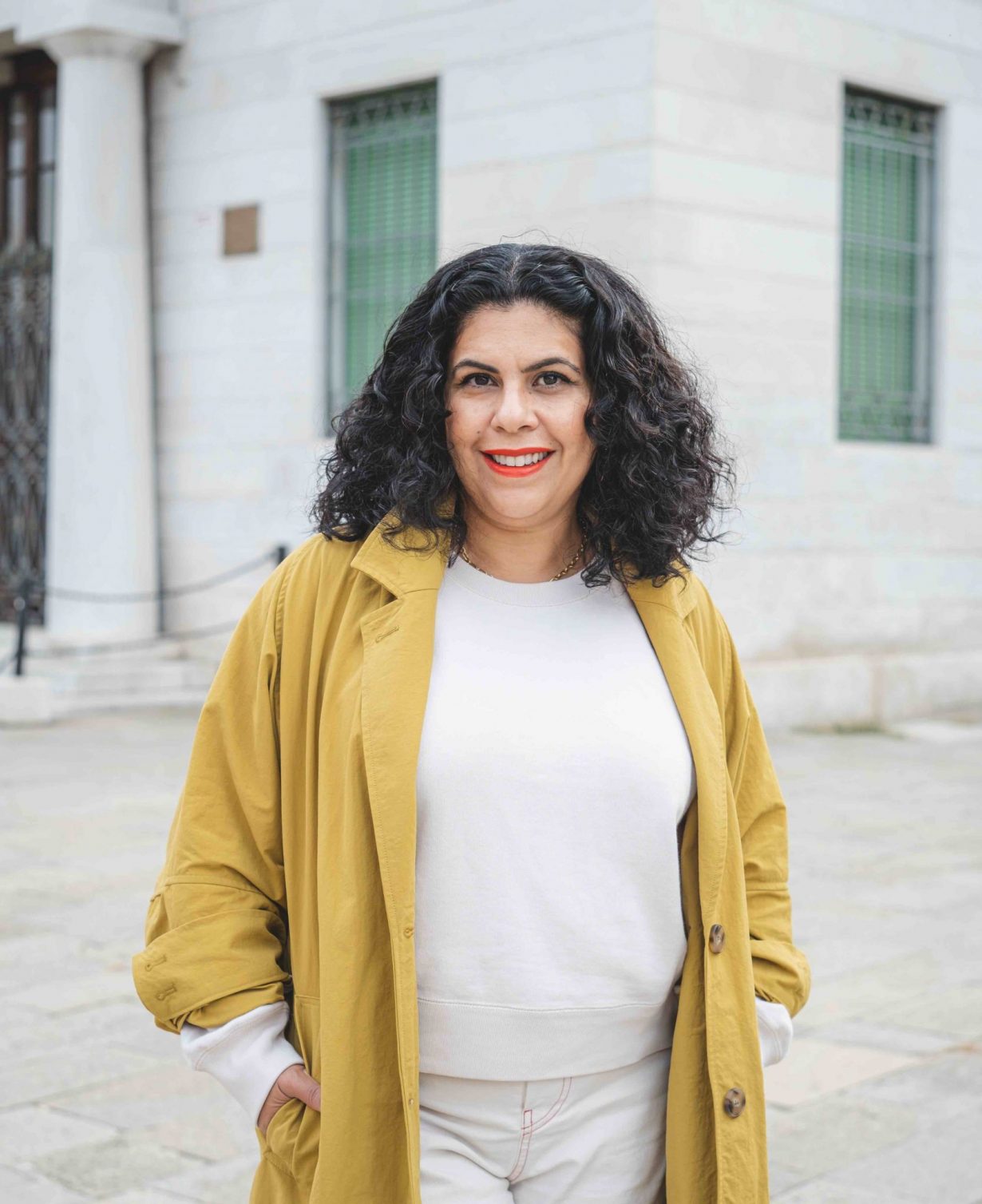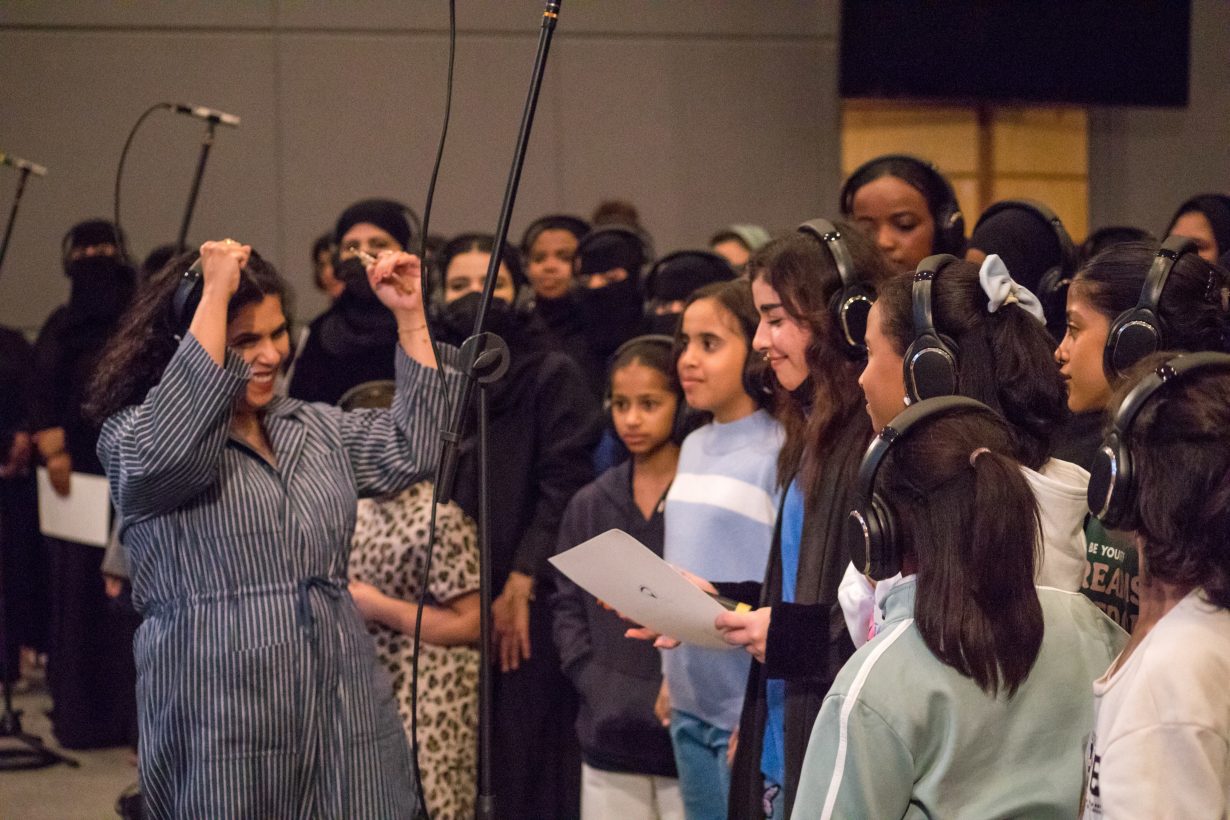ArtReview sent a questionnaire to artists and curators exhibiting in and curating the various national pavilions of the 2024 Venice Biennale, the responses to which will be published daily in the leadup to and during the Venice Biennale, which runs from 20 April – 24 November.
Manal AlDowayan is representing Saudi Arabia; the pavilion is in the Sale d’Armi, Arsenale.

ArtReview What do you think of when you think of Venice?
Manal AlDowayan I see Venice as a place that exists in a state of beauty and crisis. I am always blown away by the vision of the architects of this ancient city and I am also constantly reminded of how fragile this city is as we face the challenges of climate change.
AR What can you tell us about your exhibition plans for Venice?
MAD I am presenting an artwork titled Shifting Sands: A Battle Song, a multimedia installation that is deeply linked to my practice over the past 20 years, but explores contemporary ideas that I have recently been focusing on in my research, specifically the evolving role of women in my country’s public sphere and their ongoing journey to redefine both the physical space they inhabit and the narratives that have historically defined them, both internally and externally.
For this artwork I have used participatory action, soft sculpture and sound as my medium. As a concept I look at the impact of image and media on self-perception, focusing on my experience and the experience of women in my country. This artwork has taken me to the dunes of the empty quarter, where I have captured the sound of the singing sand dunes. Then a three-city tour across Saudi Arabia where I conducted group singing sessions with 1000 women and girls and finally to Venice where I built my soft sculpture.
Supporting me on this journey are a team of brilliant curators: Maya El Khalil, Jessica Cerasi and Shadin AlBulaihed, who have helped me realise my artwork and a beautiful catalogue of commissioned essays that articulate the nuances of my artwork through the words of poets, historians and researchers.
AR Why is the Venice Biennale still important, if at all? And what is the importance of showing there? Is it about visibility, inclusion, acknowledgement?
MAD The Venice Biennale has its place of importance when it comes to art. What differentiates it for me, is that it is closely linked to what a country puts forward as a narrative and the artist that represents this narrative. It is undeniably still one of the most important platforms for artistic dialogue, the exchange of ideas and critical reflections, not only in art but on pressing social, political and environmental issues.
AR When you make artworks do you have a specific audience in mind?
MAD Yes and No.
I usually consider the audience’s experience when the artwork is a site-specific commission. In these situations, I always try to understand the viewer of my artworks to better anticipate their connection to the concepts I present to them, especially when it is a permanent public artwork, or I am asked to engage with a community that is not mine. Artworks that are made in my studio as an expression of my practice and life, I tend to avoid thinking about the audience and instead work towards making an artwork that speaks my truth and my language. I find that an honest human experience in the form of an artwork can have a connection with any audience.

AR Do you think there is such a thing as national art? Or is all art universal? Is there something that defines your nation’s artistic traditions? And what is misunderstood or forgotten about your nation’s art history?
MAD Nationhood and its complexities are an ongoing debate when it comes to the Venice Biennale. There is something fascinating about the narratives that governments choose to put forward through the language of art. I also admire all the artists that work under these circumstances and still manage to create artworks that are powerful and emotional.
Saudi Arabia is quite a young country, it has only been participating in the Venice Biennale for a few years, but artistic expression has existed on our land for millennia with rock engravings and sculptures created by ancient inhabitants of Arab Kingdoms like the Nabateans, Lihyans and Dadanites. Contemporary art is the language of expression for my generation of artists. Like our ancient sites that are just now being uncovered and documented, our art history is just beginning to be written by our own art historians using our canon of cultural expression.
AR If someone were to visit your nation, what three things would you recommend they see or read in order to understand it better?
MAD If you were to visit Saudi Arabia, I would say you must first start with the people, have a conversation, a meal or any interaction that allows you to understand our traditions of generosity, our sharp sense of humour and our love for storytelling.
AR Which other artists have influenced or inspired you?
MAD I have loved many artists over the years, but I am mostly influenced by writers and musicians. When I read a text or listen to a beautiful song that moves me, the images I create in my mind are what have remained with me as influences. I admire the fictional writings of Sahar Khalifa, the poetry of Fowziyah Abu Khalid, the songs of Mohammed Abdo to name a few.
AR What, other than your own work, are you looking forward to seeing while you are in Venice?
MAD I look forward to visiting all the Arab pavilions, Mounira Al Solh representing Lebanon, Wael Shawky representing Egypt, Abdulla Al Saadi representing the UAE and Oman. I also always look forward to the main exhibition of Foreigners Everywhere curated by Adriano Pedrosa because it sets the stage for the conversations and the connections that will be made for everyone participating in this year’s biennale.
The 60th Venice Biennale, 20 April – 24 November